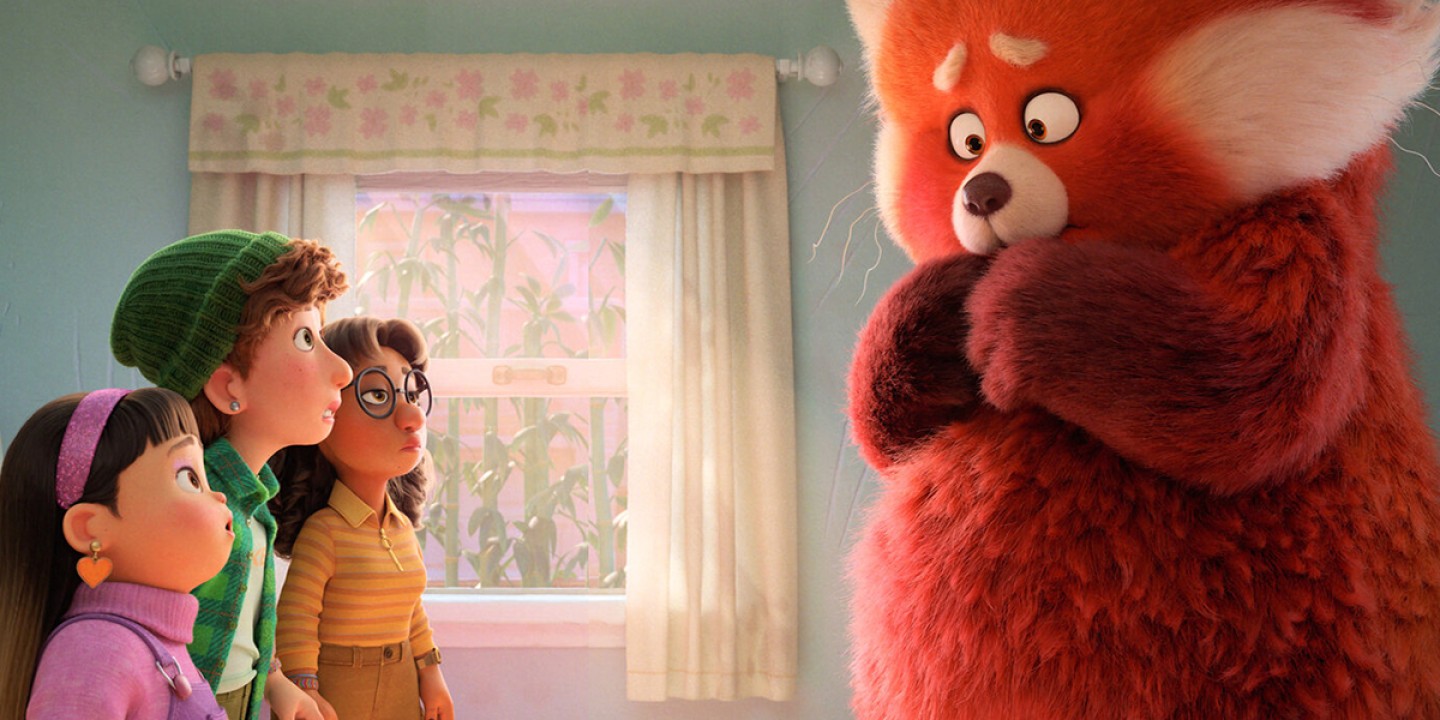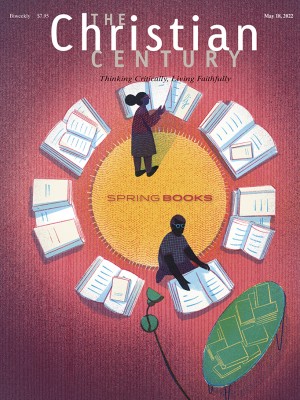Turning Red and the terror and joy of female adolescence
Watching the Pixar movie alongside Euphoria and Yellowjackets made me appreciate the exuberant intensity of Mei’s embodiment.

In the hilarious, deeply insightful Pixar movie Turning Red (directed by Domee Shi, streaming on Disney+), our animated heroine Meilin (voiced by Rosalie Chiang) sketches the likeness of the local mini-mart clerk on the margins of her homework, listing the qualities that are not so bad about him. “His shoulders are kind of nice, I guess; his eyes are fine.” His attractive qualities come to life in her drawing, and almost against her will she ends up under her bed filling page after page with romantic fantasy drawings—Devon as a merman, Devon tenderly staring into her eyes—discovering with increasing glee the power of a first romantic obsession.
Her mother’s assumption that the drawings represent actual events as opposed to fantasies, along with Meilin’s confused shame that she could produce such drawings in the first place, sets in motion one of the most painfully hilarious sequences of the movie. It also encapsulates the main themes the movie explores: the tensions between loyalty to family and burgeoning adolescent independence and how we navigate the messy, painful, joyful parts of ourselves that don’t fit neatly into expectations.
Read our latest issue or browse back issues.
These coming-of-age themes are given a special twist in Meilin’s case, as she discovers that she is afflicted with an ancient curse that turns the women in her family into giant red pandas when they hit puberty. All the usual chaos of adolescence—wild mood swings, awkward bodies, first periods, and awakening sexual desire—are literally externalized in Mei’s panda body, which erupts whenever she feels strong emotions.
This universal puberty metaphor is given beautiful, particular focus with the added layers of Meilin’s experience as a first-generation Chinese immigrant in early-2000s Toronto. Meilin is aware that her parents put more stock in the values of parental honor and family loyalty than some of her friends’ families do. For the most part, she earnestly seeks to live up to their expectations while also excelling by the standards of her new culture. If that means hiding parts of her life from her parents—her obsession with the boy band 4*Town, her youthful crushes, her secret desire to sing karaoke and eat junk food—it seems a small price to pay and one she negotiates fine until the panda shows up.
The panda curse, however, doesn’t just alienate Mei from her parents as a metaphor for adolescent self-discovery. It also connects her to the women in her family as she hears the stories of how her mother, aunts, and grandmother dealt with their own pandas. This suggests that the panda might also be a metaphor for the repressed memories and emotions of immigrant experiences and the difficult decisions women of all cultures make in how they deal with emotions deemed unsuitable for women: anger, rage, confusion, desire, and rebellious joy.
Turning Red manages to take a viewer into these deep waters without losing the playfulness and silly humor that make it a top-notch family movie. It achieves this remarkable feat by both staying grounded in particular characters with specific stories and motivations and also opening up powerful emotions that are relatable across age and gender. My 12-year-old son was on the edge of his seat, feeling every single one of Mei’s emotions. Yes, even the heart-stopping mortification when her mother shows up at school with a box of pads.
“Pay attention to your body,” we tell our children across a range of activities, from potty training to navigating public space to trusting their instincts with strangers and friends. But Meilin’s journey reminds us that this is easier said than done, maybe especially for girls, whose bodies are a source of constant fascination and anxiety. I’ve been devouring two not-for-families series: Euphoria (created by Sam Levinson for HBO) and Yellowjackets (created by Ashley Lyle and Bart Nickerson on Showtime). Female adolescence is at the heart of both of these shows, too, but it is more of a destructive battleground than a source of joy or self-awareness.
I assumed that depictions of the drug-addled, self-destructive sex lives of California teenagers in Euphoria would fuel my generalized paranoia around 21st-century parenting. But far from being a portrait of “kids these days,” the show is a highly stylized exploration of a very particular set of kids, who endure the traumas inflicted on them by parents who die of cancer, destroy lives with their own addictions, and commit horrible acts of abuse. Most of the young women are trapped in a patriarchal hellscape at least as despair-inducing as the drug dependency depicted on the show. No amount of body positivity and frank sexuality can subvert the misogyny that traps them in self-loathing relationships to their own bodies and often in competitive, destructive relationships with one another.
Yellowjackets is an addictively compelling drama about a high school girls’ soccer team that crashes in the Canadian wilderness. The show flashes between the mid-1990s and the present day with an easy synergy that heightens the sense that the adult women are carrying in their bodies the traumas of the grisly, perhaps murderous months they spent surviving in the wilderness. The tragedy of the show is not what the girls did or didn’t do to survive but the suggestion that for all the horrors of those months, they were the time these women felt most alive and most in their own bodies.
Watching these shows alongside Turning Red made me appreciate even more starkly the most astonishingly wonderful thing the Pixar movie offers: the intensity with which we get to feel Mei’s embodiment. That scene of her awakening crush is so pitch-perfect because her body is a source of both possible betrayal and intense joy and power. This tension is amplified by the red panda conceit: her body literally transforms into a wild, powerful animal, but through that experience Mei begins to learn the sheer joy of embracing her human form, which she can only do through the ride-or-die love and support of her female friends.
Maybe in a less family-friendly genre than a Pixar movie, Mei and her friends would be headed toward the backbiting survival of these edgier adult dramas, which are created, after all, by adults looking back with nostalgia and anxiety on their own images of female adolescence. But maybe, we can hope, if we tell more stories about teenage girls like Mei—panda or no panda—we’ll have something different to be nostalgic about when we carry those stories into adulthood.
A version of this article appears in the print edition under the title “The chaos and joy of girl power.”






